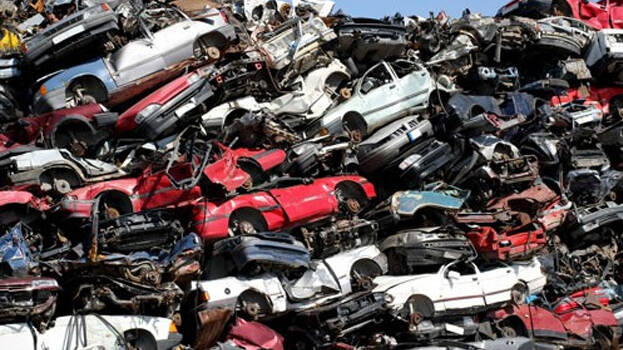In 2021, the Government announced the vehicle scrappage policy with the intention of replacing old vehicles with new ones on Indian roads. The objective was to reduce pollution and increase the demand for new and modern vehicles.
Many developing and developed countries like China, Canada, the USA, Germany, etc., have similar policies for curtailing pollution caused by old vehicles and boosting the automobile sector. It is also in sync with the Green India Mission of creating a cleaner environment for people. Moreover, many large automobile companies like Maruti Suzuki, Mahindra and Mahindra, and Toyota have launched scrappage centres to support the policy.
What is the Government’s Vehicle Scrappage Policy?
According to the vehicle scrappage policy, all commercial vehicles more than 15 years old and passenger vehicles more than 20 years old will have to go through emission and fitness tests. If they fail these tests, then they will have to be mandatorily scrapped.
It is important to remember that age is not the only criterion for scrappage policy for vehicles. The policy defines a series of tests that check the quality of brakes, the performance of the engine, and a host of other factors to determine its condition.
Old vehicles are known to be the biggest contributor to vehicular pollution in India. Via this policy, the government intends to phase out old vehicles and reduce the pollution levels. This can also work as a catalyst for the automobile sector as it would boost the sales of new vehicles.
Among other industries hit by the pandemic, the automobile manufacturing sector registered a record slowdown in sales. Therefore, this policy is also considered to be a part of a larger stimulus package for them.
How is the Policy Being Implemented?
The policy is proposed to be implemented in phases. Under the first phase, the government proposes to set up 75 automated testing stations across the country. The plan is to increase the number of these stations to around 400-500. The government is allowing private companies to partner with State Governments to set up these testing stations.
Over the coming 4-5 years, the government plans to set up around 50-40 scrapping facilities across the country. However, the Society of Indian Automobile Manufacturers (SIAM) has requested the government to allow existing dealer workshops to function as testing stations. It believes that setting up new stations might delay the implementation of the policy.
There are many benefits of this policy. These include:
- Reduced vehicular pollution levels.
- Better road safety.
- Reuse of raw materials derived from scrapped vehicles in new vehicles. This can help reduce the cost of manufacturing and boost sales.
Potential Benefits to Vehicle Owners
- Potential discounts on the purchase of new vehicles if they are scrapping their old ones
- Waiver of the registration fee for the new vehicle
- State Governments might offer a rebate on road tax to vehicle owners who scrap their old vehicles and buy new ones
As a bike owner, it is important to ensure that your vehicle complies with the prevalent laws. Like you need to ensure that you do not ride your bike without a valid two-wheeler insurance plan, you also need to make sure that if your bike is older than the age specified in the two-wheeler bike insurance policy, then you get it tested for fitness and emission. When you are purchasing insurance for a two-wheeler, opt for a comprehensive bike insurance plan to get coverage for damage from an accident, disaster, or mishap.
Summing Up
The Government’s vehicle scrappage policy is designed to offer incentives to automobile manufacturers and vehicle owners while being good for the environment. Therefore, it is expected to generate good results in the future. The Government is hopeful that this policy will help energise the country’s automobile and metals sectors by using the principles of Reuse, Recycle, and Recover. Also, ensure that you have valid insurance for your bike before you drive your bike on the roads.


